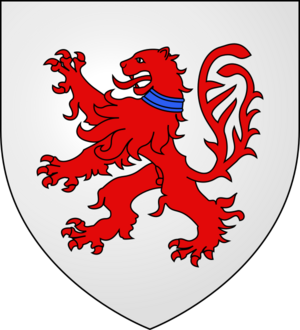John de Havering facts for kids
John de Havering (who died in 1309) was an important English leader. He worked for King Edward I as a soldier and government official. He was known as one of the king's best helpers. He held big jobs like Seneschal (a high-ranking officer) of Gascony and Justiciar (a chief judge) of North Wales. He was also the Lord of Grafton.
Contents
John de Havering's Life and Work
John de Havering's father was Richard de Havering. Richard managed the lands for a powerful noble named Simon de Montfort, 6th Earl of Leicester. When John's father died in 1267, John took over his family's lands. He became the Lord of Grafton in Northamptonshire during the time of King Henry III.
Early Career and Roles
From October 1274 to October 1278, John de Havering worked as the Sheriff of Hampshire. A sheriff was like a chief law enforcement officer for a county.
After England took control of Wales in 1284, he became a Deputy Justiciar of North Wales. This meant he helped govern the area and make sure laws were followed. In July 1287, he helped lead the army that stopped a rebellion by a Welsh lord named Rhys ap Maredudd. After this rebellion was put down, Havering was replaced as Justiciar in November 1287. He then traveled with King Edward I to Gascony, a region in what is now France.
Serving in Gascony
Before returning to England in the summer of 1289, King Edward I made John de Havering the Seneschal of Gascony. This was a very important role, almost like a governor.
Soon after starting, Havering made some changes in the city of Bordeaux. The people of Bordeaux were not happy and complained to the French king's court in Paris. As a response, Havering took control of some wine that was meant to be sent to England. By 1290, King Edward I started hearing bad news from Gascony. When the king visited in 1294, he found many local nobles and citizens were unhappy with how the English were managing things.
Return to England and Welsh Rebellion
In 1294, Havering returned to England. The king asked him to speak to a meeting of important church leaders. Havering, speaking for the king, told them they had to agree to higher taxes. If they didn't, they could lose their legal rights.
During the Welsh Rebellion from 1294 to 1295, Havering was in charge of defending the area of Merionethshire. In 1295, the leader of the rebellion, Madog ap Llywelyn, surrendered to him. Because of this, Havering claimed a reward of 500 marks for capturing Madog.
From 1295 to 1301, he served again as Justiciar of North Wales. His job was to find out why the rebellion started. However, he didn't show much understanding for the Welsh people. They were upset about high taxes and being forced to join the king's army. In 1299, King Edward I asked Havering to attend the Parliament.
Second Time in Gascony
In 1305, Havering was appointed Seneschal of Gascony again. Gascony had been taken over by France during a war, but it was now back under English control. Havering's son, Richard de Havering, went with him to France and served as a commander in Bordeaux.
As Seneschal, Havering didn't have much income or power. This made it hard for him to stop fights between powerful local nobles. In April 1306, King Edward I gave control of Gascony to his son, Edward, who would later become king. Havering was replaced as Seneschal in 1308. He likely died around 1309.
Family and Legacy
John de Havering's wife, Margaret, still owned lands in Essex and Hertfordshire in 1336. His son, Richard de Havering, became a very important church leader, the Archbishop of Dublin.


